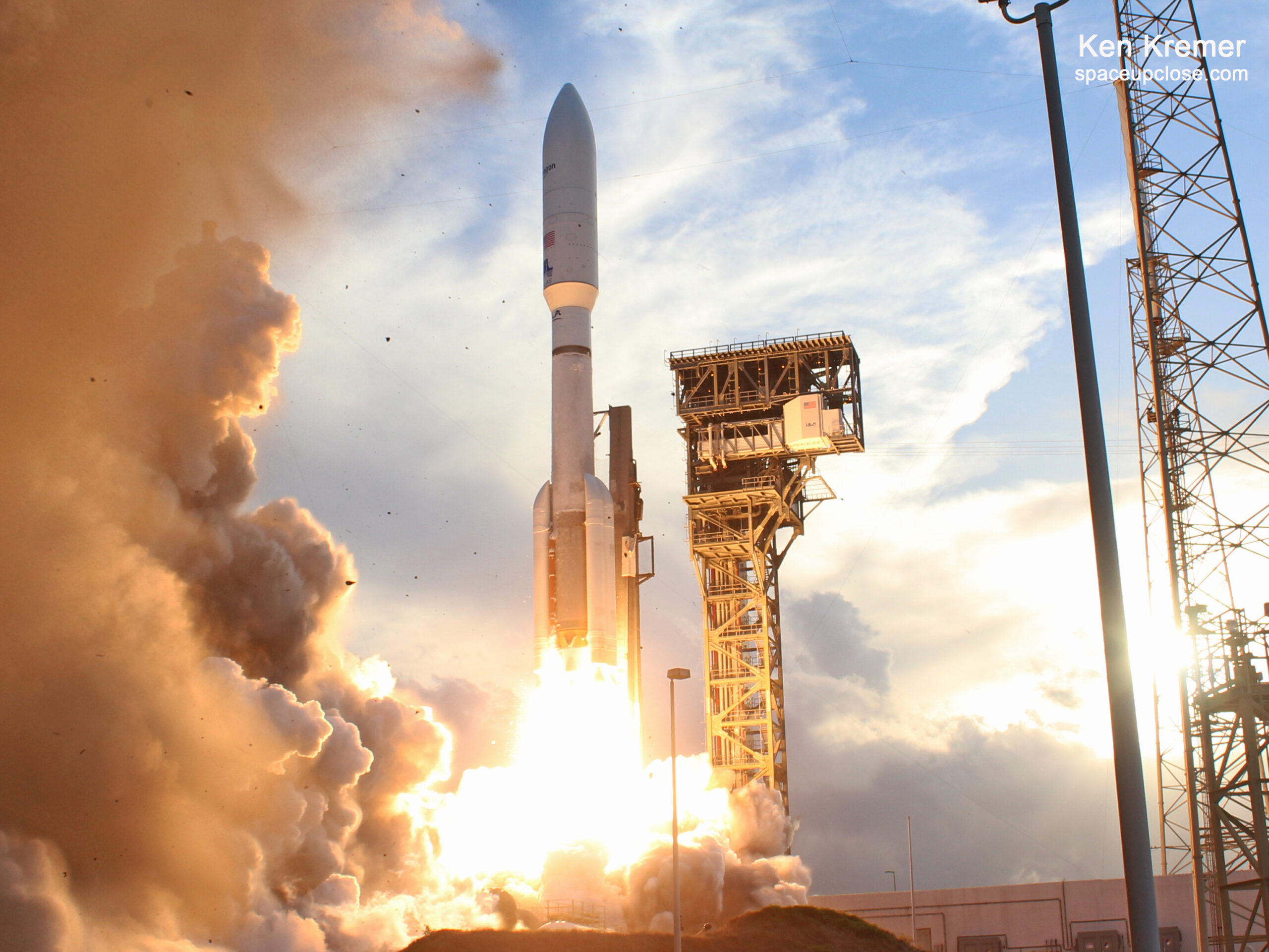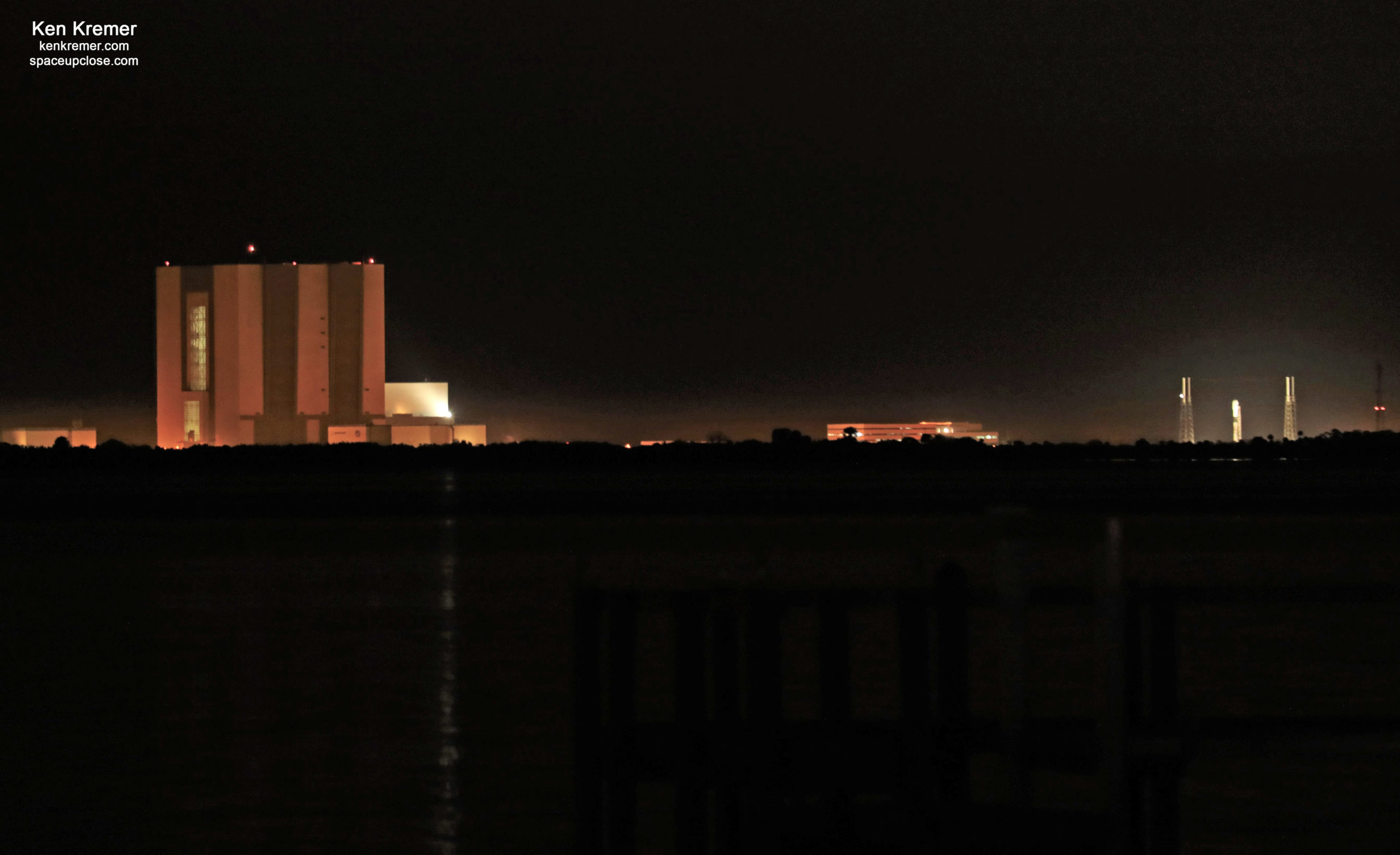
For SpaceUpClose.com & RocketSTEM
TITUSVILLE, FL – Poor weather and technical issues have forced multiple delays to attempts by SpaceX to launch a double header of Starlink missions these past few weeks – in some cases just a day or two apart and once spaced just 5 hours apart in what would have been a record setting event not seen for decades.
Next up this evening is the already weather delayed liftoff of a veteran five times flown Falcon 9 booster B1059 now ready for its sixth flight as B1059.6 carrying the 19th batch of Starlink broadband internet satellites.
Following last nights, Sun. Feb. 14, weather forced scrub liftoff of the flight-proven SpaceX Falcon 9 for tonights launch of the next tranche of 60 Starlink satellites from seaside Space Launch Complex 40 (SLC-40) at Cape Canaveral Space Force Station in Florida is slated for the instantaneous launch window at 10:59 p.m. EST, or 3:59 GMT on February 16.
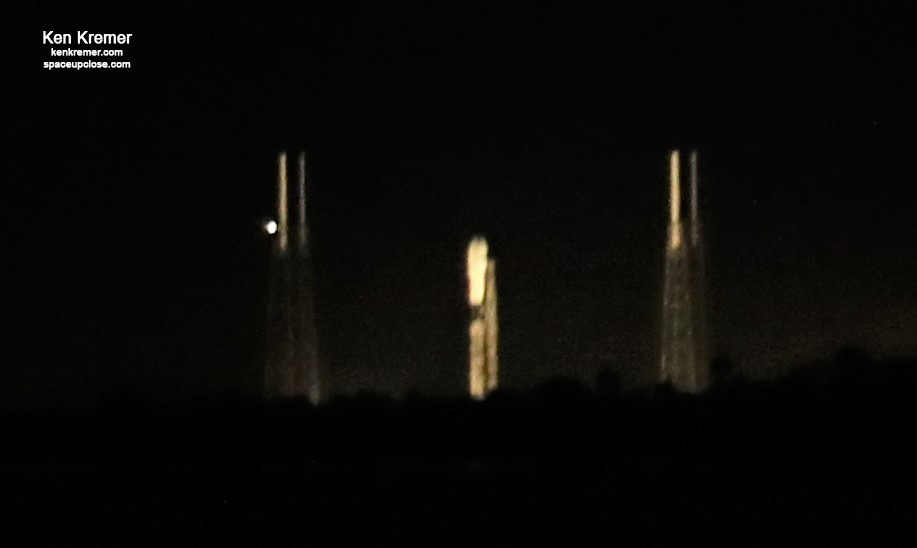
Last night we could see thunder strikes in the distance behind pad 40 in the Atlantic Ocean as the 229-foot-tall (70-meter) flight-proven Falcon 9 rocket was raised erect at pad 40.
Ultimately SpaceX called the scrub at 10:43 p.m. ET on Valentines evening Feb. 14 just minutes before the start of fueling operations with densified RP-1 and liquid oxygen propellants at T Minus 35 minutes.
Due to unfavorable weather tonight, now targeting Monday, February 15 at 10:59 p.m. EST for Falcon 9's launch of 60 Starlink satellites
— SpaceX (@SpaceX) February 15, 2021
Enjoy our Space UpClose team photos taken from Space View Park in Titusville along the Indian River lagoon.
SpaceX did conduct a prelaunch static fire on Saturday afternoon in anticipation of the then planned Sunday night launch for what is designated as Starlink 19.
Static fire test complete – targeting Sunday, February 14 at 11:21 p.m. EST for launch of 60 Starlink satellites from SLC-40
— SpaceX (@SpaceX) February 13, 2021
If all goes well the next Starlink launch would be a the 2nd of a double header of launched is targeted for jiust past midnight Wednesday, Feb. 17 at 12:55 a.m. ET on an oft delayed launch from pad 39A at KSC that was previously planned to liftoff in late January.
SpaceX will webcast the Falcon 9 launch live starting about 15 minutes before the planned liftoff:
You can watch the SpaceX launch webcast live: here spacex.com/launches
The launch window is instantaneous.
The launch time moves up about 20 to 25 minutes earlier each day of delay.
The next launch opportunity is Tuesday Feb. 16 at with an 80% chance of acceptable weather conditions.
There are no rideshare payloads on this flight.
The weather prognosis is moderate for this evening with about a 60% chance of acceptable conditions at launch time according to the Air Force meteorologists team at the 45th Weather Squadron.
The primary weather concern is the cumulus cloud rule
“A low pressure area is developing in the Gulf of Mexico. This low will pull the frontal boundary that’s been creating all the unsettled weather north of the spaceport. The area will still be unseasonably warm, so isolated afternoon showers and thunderstorms are possible. The primary weather concern is the cumulus cloud rule associated with any lingering convection.”
At launch time, forecasters predict isolated rain showers, with otherwise scattered clouds, winds from southwest at 7 to 12 mph, and a temperature of approximately 70 degrees Fahrenheit.
The Falcon 9 first stage rocket booster supporting this mission previously flew on five missions: Dragon’s 19th and 20th commercial resupply missions to the International Space Station, a Starlink mission, the SAOCOM 1B mission, and most recently the top secret NROL-108 mission for the NRO in Dec. 2020.
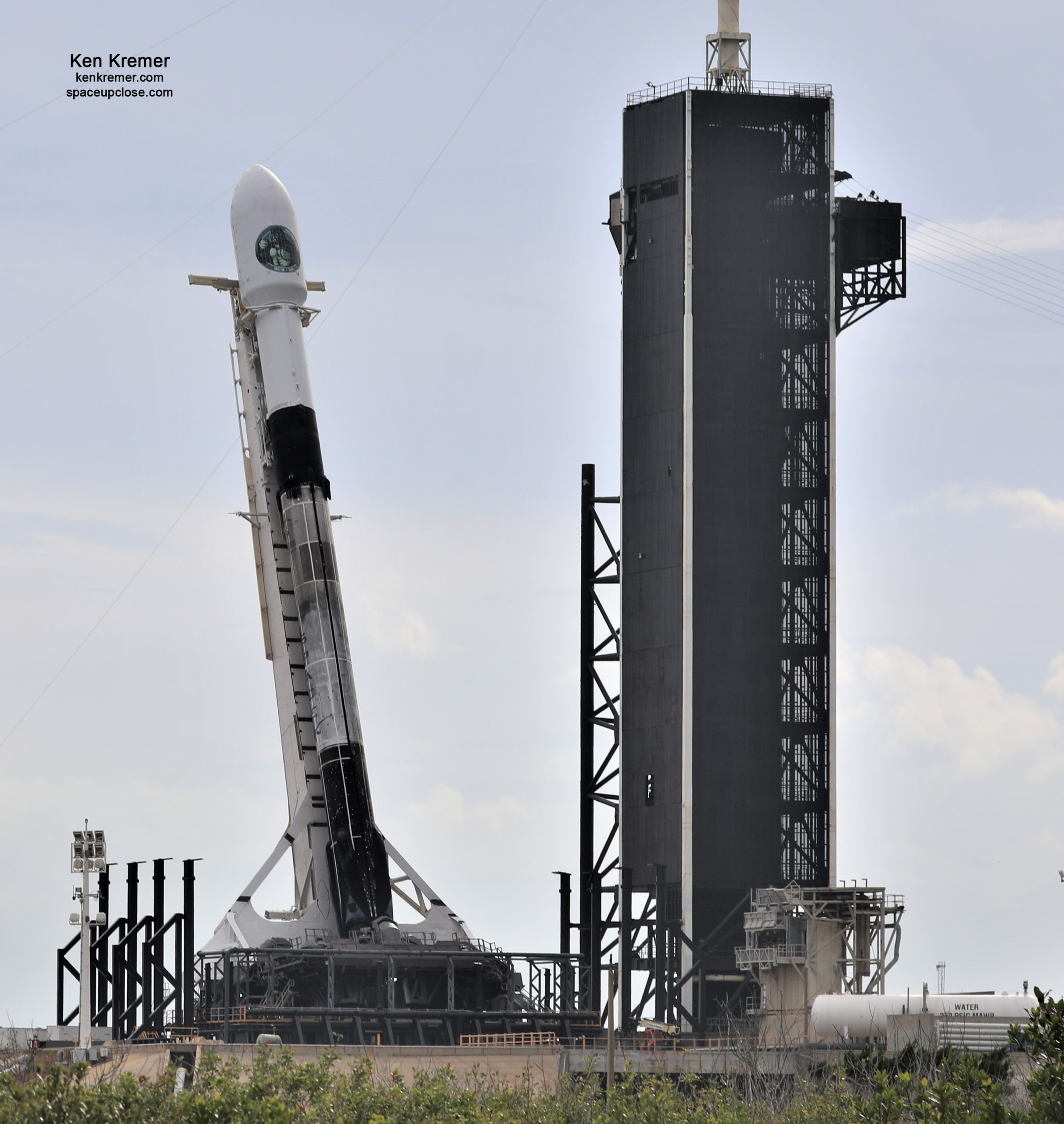
Following stage separation, SpaceX will land Falcon 9’s first stage on the “Of Course I Still Love You” (OCISLY) droneship, which is already prepositioned in the Atlantic Ocean off the cpoast of the Carolinas some 400 miles (640 km) northeast of the launch site.
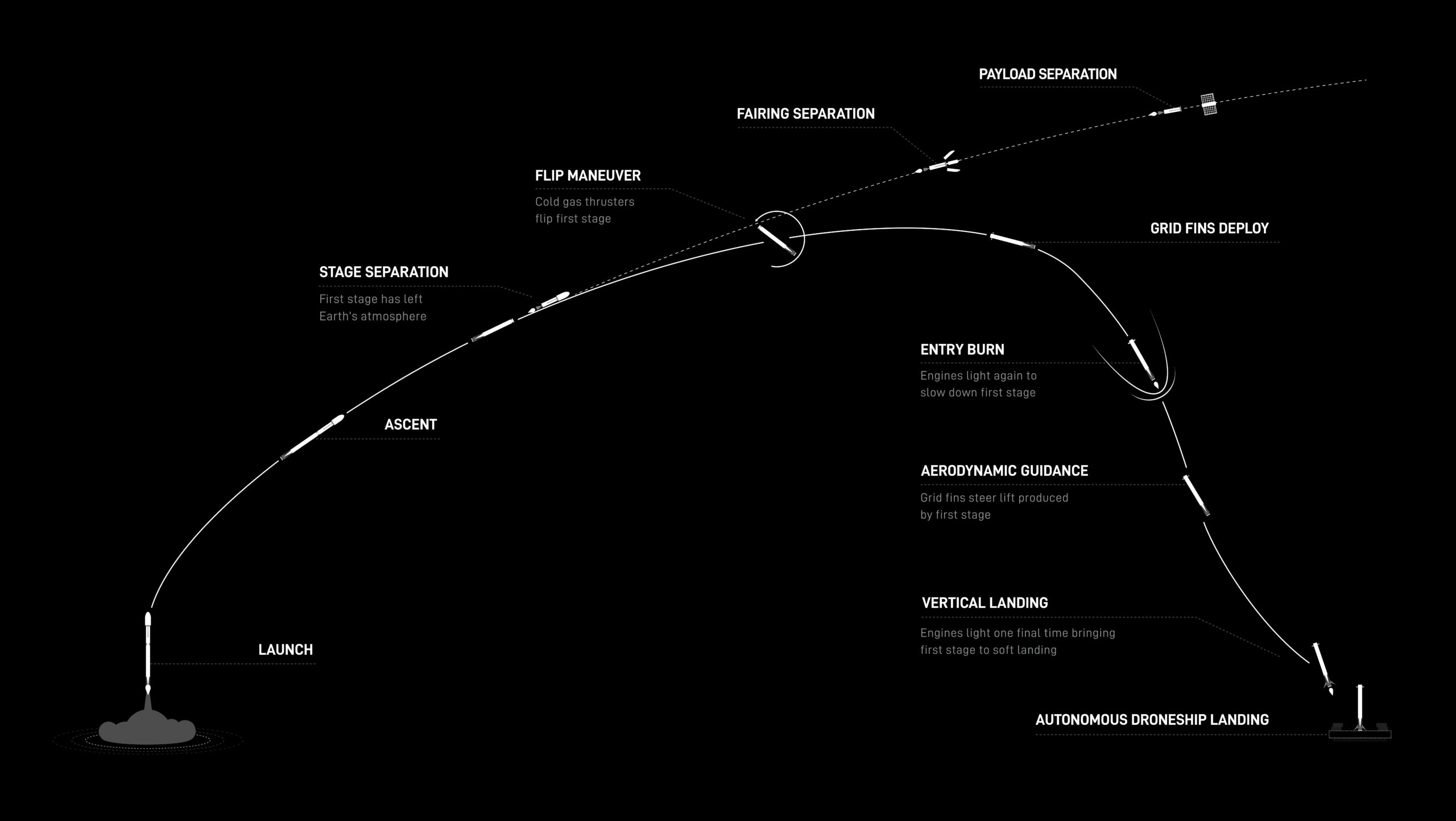
Overall this will be the 108th Falcon 9 launch since 2010 as well as the 5th Falcon 9 launch of 2021 and the 19th Starlink launch.
The flat panel Starlink satellites will be deployed about 1 hour and four minutes after liftoff.
They will be injected into an initial orbit ranging between 157 miles (254 kilometers) and 177 miles (286 kilometers), with an inclination of 53 degrees to the equator.
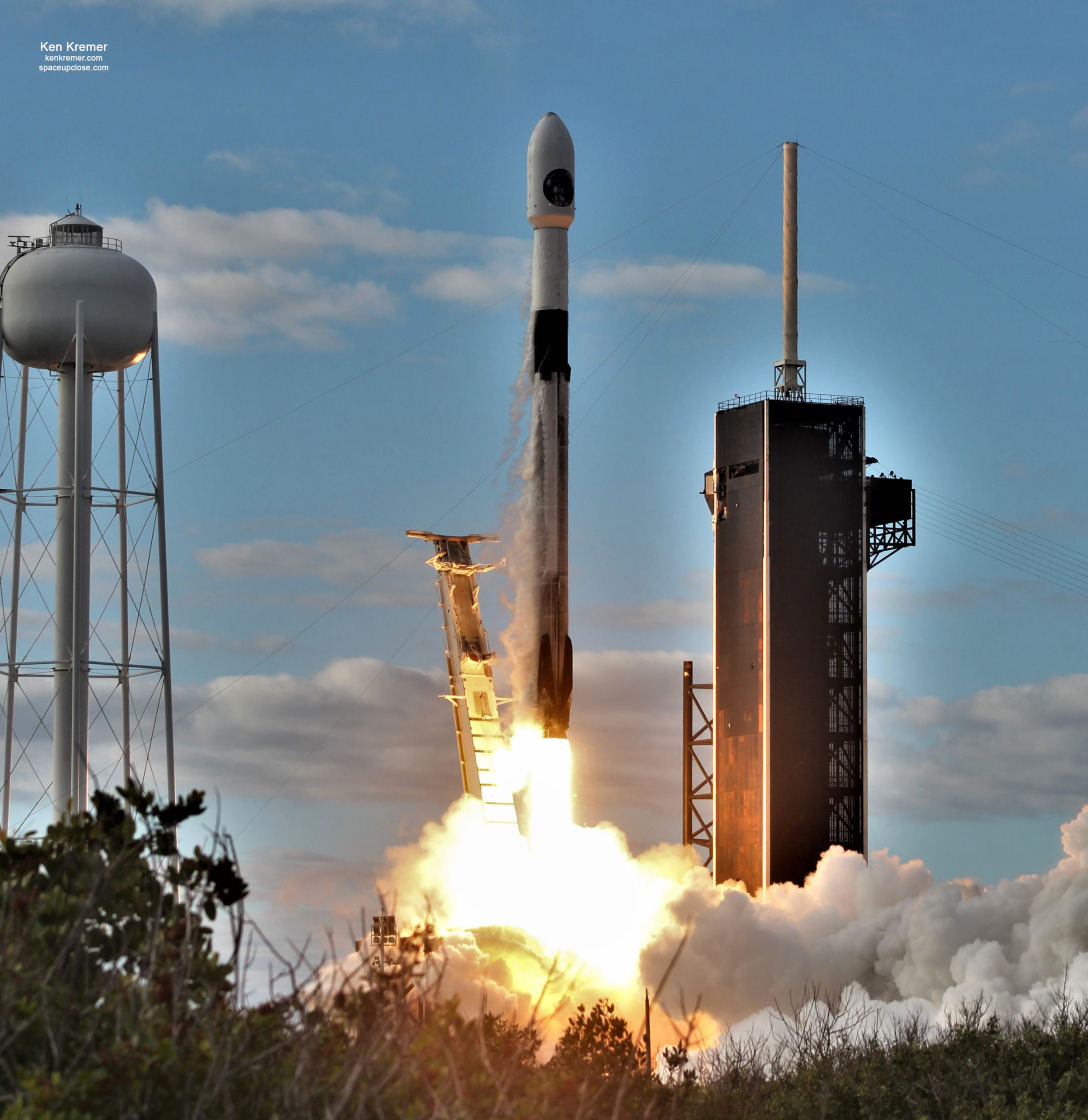
The 500 pound Starlink satellites are manufactured by SpaceX in Redmond, Washington.
Starlink is now delivering initial beta service both domestically and internationally, and will continue expansion to near global coverage of the populated world in 2021, says SpaceX.
Starlink will provide high speed low latency internet access to rural areas at first and then expand across the US and eventually globally with well in excess of 12,000 satellites, says CEO Elon Musk
To see if Starlink is available in your area, visit starlink.com.
Following the prior Starlink launch as the 18th batch on Feb. 4 that brought the total number of Starlink satellites launched to 1,085 internet satellites. That includes earlier prototypes mostly from the first launch as well as the 10 Starlink sats launched to polar orbit on the last Falcon 9 launch on Transporter-1 mission on Jan. 24. Check out our story and photos

That last mission expanding the Starlink constellation to well over 1000 also counted as the 107th flight of a Falcon 9 – an amazing launch cadence with nearly a quarter of those just in the past year and in large part enabled by the now routine reuse of ‘flight-proven’ and recovered 1st stage boosters.
It also marked the 74th landing by land or by sea.
The new mission thus fortifies the Starlink constellation of relay satellites that one day upcoming will offer a competitive alternative to existing broadband services across North America – including the US and Canada.
The next Starlink launch is set for Wednesday, Feb. 17 on the oft delayed launch from pad 39A at KSC that was originally planned to liftoff in January on the 18th mission.
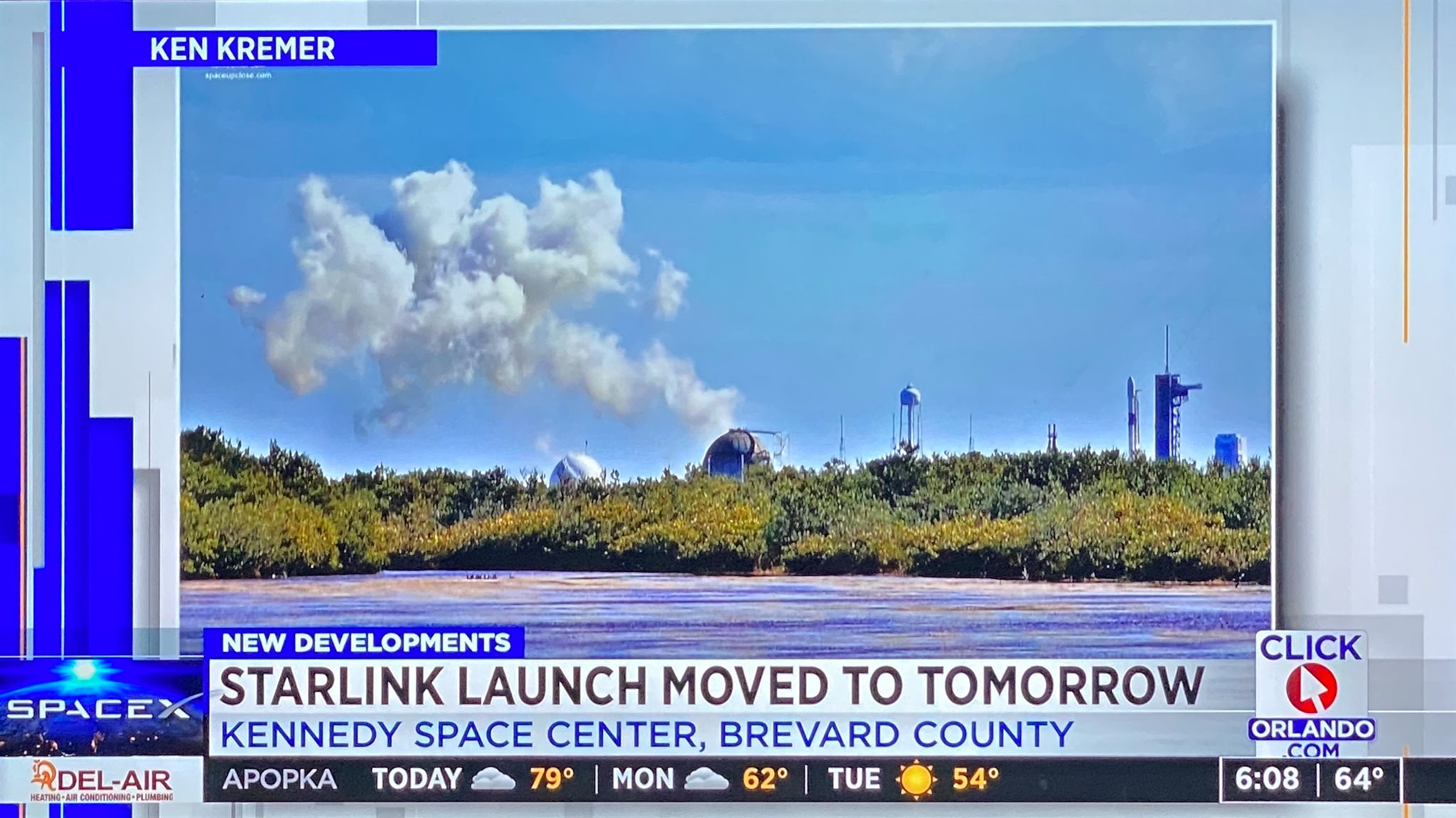
Watch Ken’s continuing reports about NASA missions and Artemis, Mars Perseverance and Curiosity rovers, SpaceX, Commercial Crew and ISS and onsite for live reporting of upcoming and recent SpaceX and ULA launches including Crew 1 & 2, Demo-2 and Starliner, X-37B, Solar Orbiter, NRO spysats and more at the Kennedy Space Center and Cape Canaveral Space Force Station.
Stay tuned here for Ken’s continuing Earth and Planetary science and human spaceflight news: www.kenkremer.com –www.spaceupclose.com – twitter @ken_kremer – email: ken at kenkremer.com
Dr. Kremer is a research scientist and journalist based in the KSC area, active in outreach and interviewed regularly on TV and radio about space topics.
………….
Ken’s photos are for sale and he is available for lectures and outreach events
Please consider supporting Ken’s work by donating at Patreon:
https://www.patreon.com/kenkremer
x


